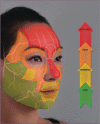Guideline for the Management of Hyaluronic Acid Filler-induced Vascular Occlusion
- PMID: 34188752
- PMCID: PMC8211329
Guideline for the Management of Hyaluronic Acid Filler-induced Vascular Occlusion
Abstract
Vascular occlusions can occur with injection of dermal fillers causing devastating outcomes for the patient. The occurrence, and subsequent management, of these negative outcomes is a source of significant stress to the aesthetic clinician. Complications management is an essential component of clinical practice and professionals must develop competence and confidence in the identification and effective treatment of a vascular occlusion. The relatively rare occurrence of a vascular occlusion mandates that learning must be largely through the study of theory in addition to the sharing of learning experiences within a collaborative clinical community. The delivery of optimal care begins with an understanding of the underlying pathophysiology and the ability to assess and elicit clinical signs. Establishing a clinical diagnosis, targeted therapy can commence in a timely fashion. This paper provides guidance on how to identify and manage a vascular occlusion caused by cross-linked hyaluronic acid. It provides a detailed description of the pathological process of tissue ischemia, and introduces identifiable stages which will help to determine the extent of ischemia and the time frame since ischemic onset. The stages are particularly important as they highlight when wound support may be needed.
Keywords: Vascular occlusion; complication; cross-linked hyaluronic acid; dermal filler; filler; hyaluronic acid; hyaluronidase; necrosis; non-surgical.
Copyright © 2021. Matrix Medical Communications. All rights reserved.
Conflict of interest statement
FUNDING:No funding was provided for this article. DISCLOSURES:The authors report no conflicts of interest relevant to the content of this article.
Figures
References
-
- Belezney K, Carruthers J, Humphrey S et al. Update on avoiding and treating blindness from fillers: A recent review of the world literature. Aesthet Surg J. 2019;39(6):662–674. - PubMed
-
- Hayreh SS, Kolder HE, Weingeist TA. Central retinal artery occlusion and retinol tolerance time. Opthalmology. 1980;87(1):75–78. - PubMed
-
- Delorenzi C. New High Dose Pulsed Hyaluronidase Protocol for Hyaluronic acid filler vascular events. Aesthet Surg J. 2017;37(7):814–825. - PubMed
-
- Taylor GI, Shoukath S, Gascoigne A et al. The functional anatomy of the opthalmic angiosome and itsimplications in blindness as a complication of cosmetic facial filler procedures. Plast Reconstr Surg. 2020;146(4):745. - PubMed
LinkOut - more resources
Full Text Sources








